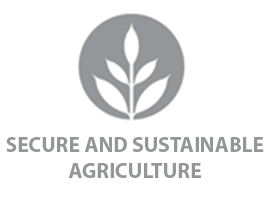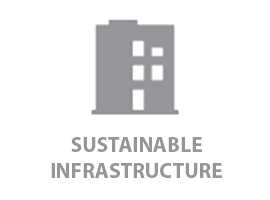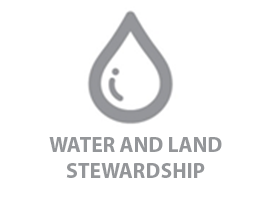Next-Gen Feedstocks Project
Research Menu
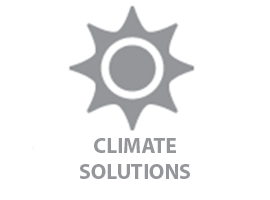 Current
Current
Funded
iSEE Work
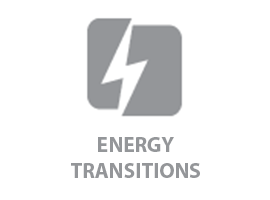 Current
Current
Funded
iSEE Work
Current
Funded
iSEE Work
Current
Funded
iSEE Work
Current
Funded
iSEE Work
Project Overview
![]() The Next-Gen Feedstocks Project fits into the iSEE research themes of Energy Transitions and Secure and Sustainable Agriculture.
The Next-Gen Feedstocks Project fits into the iSEE research themes of Energy Transitions and Secure and Sustainable Agriculture.
In Lead Investigator D.K. Lee’s words:
 “To provide sustainable sources of energy for an ever-growing world population, we must build a new energy plan on a bioeconomy platform. That means, for starters, that we need to know which energy crops will be the most productive and valuable — and best for the environment.
“To provide sustainable sources of energy for an ever-growing world population, we must build a new energy plan on a bioeconomy platform. That means, for starters, that we need to know which energy crops will be the most productive and valuable — and best for the environment.
“We have titled our study ‘Next-Generation Feedstocks for the Emerging Bioeconomy.’ Thanks to a generous $5 million grant from the U.S. Department of Energy, our team will study new crops that could contribute to the production of affordable, sustainable sources for market-ready fuels and other valuable products.
“Our team will assess field-scale yield of advanced switchgrass varieties such as ‘Independence’ (developed by Lee) for pre-commercialization. We also will examine other warm-season perennial grasses such as switchgrass blends, big bluestem, prairie cordgrass, and Miscanthus.
“Members of our team have worked together on past projects, and we will build on our successful history. We will use data from geographically distributed field trials, combined with ecosystem, logistical, and techno-economic analyses, to learn what new varieties of energy crops will best be suited to produce the best fuels and most valuable products.”
Project News
- Summer 2024 Updates
- Summer 2023 Updates
- Summer 2021 Updates
- Project hiring Postdoctoral Researcher
- Summer 2020 Updates
- Team Hosts Switchgrass V Conference in July 2019!
- iSEE, CABBI Help Secure DOE Grant
 Updates from 2023-24 on this U.S. Department of Energy (DOE)-funded project:
Updates from 2023-24 on this U.S. Department of Energy (DOE)-funded project:
- New bioenergy-type switchgrass cultivars have shown superior biomass yields compared to older cultivars, with 50 lb N/ac fertilization resulting in the highest yields across species.
- Findings also show lower soil N2O emissions — and lower nitrogen losses through groundwater nitrate and ammonium leaching — in switchgrass plots compared to corn plots.
- More grassland bird species were detected in switchgrass as the perennial grass increased in height and density compared to corn.
- Techno-economic analysis indicates that bioenergy-type switchgrass production becomes profitable starting the year after establishment, with Independence and Liberty cultivars fertilized with 50 lb N/acre offering the best efficiency.
- These findings were reflected in two journal articles during the past year (see Publications section of this page).
- Team members participated in two outreach opportunities during the past year, presenting a poster titled “Estimating Switchgrass Biomass and Feedstock Components using UAV-based Indices” at the ASA-CSSA-SSSA International Annual Meeting, attended by about 5,000 people Oct. 29-Nov. 1, 2023, in St Louis, and taking part in a regenerative biomass retreat attended by 50 people on Sept. 15, 2023 at the University of Illinois Urbana Energy Farm.

Swathing and baling on a field in Brighton, Ill.
Principal Investigator D.K. Lee offers updates on this U.S. Department of Energy (DOE)-funded project:
-
- The 2022 growing season was completed successfully for both small-scale and field-scale plots established with perennial grasses at the Illinois Energy Farm and at Brighton, Ill.
- During the 2022 growing season, the team conducted ecosystem service measurements (soil greenhouse gas emissions, evapotranspiration, water quality, and biodiversity) for both corn and switchgrass, and quantified switchgrass biomass yield at harvest from the small-scale and field-scale plots after the killing frost.

Baling at the Illinois Energy Farm.
- The team also downloaded and processed satellite imagery for the 2022 growing season and generated gridded biomass datasets for its Iowa, Nebraska, and South Dakota study sites.
- “In addition, the team trained and tested a machine learning (ML) model for predicting evapotranspiration (peak) and N2O (seasonal average) using a two-year (2020-21) dataset,” Lee said, “and further trained, validated, and tested a ML model for predicting biomass quality using the 2020-21 dataset from the two Illinois sites, Iowa, Nebraska, and South Dakota.”
- During the 2022 growing season, the team completed feedstock chemical composition analysis for organic components for the 2021 biomass samples for all sites, using Near Infra-Red Spectroscopy.
- The team has published six scientific articles in peer-reviewed journals (see publications below), and defended a Year 3 Go/No-Go presentation with the DOE.

Corn (left) and ‘Independence’ switchgrass side by side on the Illinois Energy Farm.
Principal Investigator D.K. Lee offers updates from the middle of Year 2 on this U.S. Department of Energy-funded project:
-
- “We have now completed two growing seasons in Illinois, one in Brighton, Ill., and the other at the Illinois Energy Farm.”
- The team has three manuscripts in progress for publications in scientific journals, and just defended a Year 2 G/No-Go presentation with the DOE.
- During 2020-21, the team measured stand frequency to quantify winter kill and all harvested and quantified biomass yield at the end of the 2020 growing season after the killing frost. The team also completed a yearly modeling cycle and validate algorithms for estimating yield using 2020 subplot biomass data from the two fields in Illinois as well as fields in Iowa, Nebraska, and South Dakota.
- Further, the team trained and tested a machine learning model using growing season data, and it continued ecosystem service measurements (soil nitrogen and carbon emissions, evapotranspiration, water quality, and biodiversity).
Postdoctoral Research Associate Position in the Prairie and Bioenergy Lab
Department of Crop Sciences, University of Illinois Urbana-Champaign
Lead Researcher: D.K. Lee
Job Description: We are looking for a postdoc to join the Prairie and Bioenergy Lab. The candidate’s duties may vary but will include tasks related to agronomy, modelling and data analysis for bioenergy feedstock production. A prospective candidate should be versatile and flexible to work on a number of tasks as they are needed. She/he may be involved in some of the lab’s current projects but will take the lead on a DOE-funded projects immediately.
The candidate is expected to have a background in agronomy and previous work/research experience with modelling and data analysis. One of our projects will include high-resolution multispectral image collection from UAV (Unmanned Aerial Vehicle). These images will be analyzed along with greenhouse gas emission and phenotypic data for modelling of crop growth and estimating yield, etc. Projects are expected to generate large quantities of data that will require both data processing and statistical analysis.
This position will include the operation of motor vehicles and traveling to various field sites (in and out of state) to perform work. The candidate will also assist other graduate students, postdocs, and/or technicians in field and greenhouse work such as plant propagation and maintenance, field experimental design, sample collection, along with planting and harvesting. The position will also include the supervision of undergraduate students as they perform various tasks in the field and lab.
For more information on D.K. Lee, his research lab, and the project page, please visit: https://cropsciences.illinois.edu/people/profile/leedk, http://bioenergy.cropsci.illinois.edu/, and elsewhere on this webpage.
Interested candidates should contact D.K. Lee (leedk@illinois.edu) with a resume, cover letter indicating qualifications and contact information for three professional references. Selected candidates will be contacted for a follow-up interview.
Location: Urbana, Illinois
Type: Full Time
Specialization: Agronomy, Crop Science
Category: Research
Illinois is an Affirmative Action /Equal Opportunity Employer and welcomes individuals with diverse backgrounds, experiences, and ideas who embrace and value diversity and inclusivity (www.inclusiveillinois.illinois.edu).
The University of Illinois conducts criminal background checks on all job candidates upon acceptance of a contingent offer.
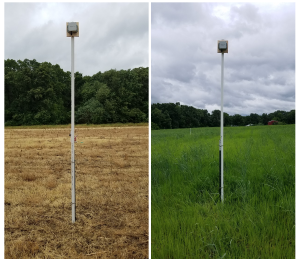 Principal Investigator D.K. Lee offers updates from the middle of Year 1 on this U.S. Department of Energy-funded project:
Principal Investigator D.K. Lee offers updates from the middle of Year 1 on this U.S. Department of Energy-funded project:
“Two locations (Brighton, Ill., and the Illinois Energy Farm in Urbana) are used for switchgrass cultivation and ecosystem service measurements.”
In Brighton:
- Corn was planted on June 3, 2020.
- Biweekly ecosystem service measurements are continuous (soil gas emissions, soil water collections, etc.).
- Avian acoustic monitoring devices (pictured left in the cornfield and right in the Independence switchgrass field) were installed on June 9, 2020.
- Aerial images are continuously taken biweekly.
At the Energy Farm:
- Soil sampling was finished, and GPS coordinates were recorded.
- Switchgrass (Independence and Liberty) and corn (DeKalb DKC60-87RIB at 34,000 seeds/acre) were planted.
- Ecosystem service measurement devices were installed, including Macrorhizons for soil water collections, chamber collars for soil gas measurements, and ion-exchange resins for annual nitrate-leaching estimations.
- Small plot planting was finished.
- Aerial images are continuously taken biweekly.
 At Iowa State University sites:
At Iowa State University sites:
- No-till corn (Hybrid: p1197AM at ~33,000 seeds per acre) was planted on April 29, 2020, and sprayed with Buctril and Laudis on June 11.
- In the large switchgrass plots and small plots, 2,4-D at 0.3 qt per acre was applied on June 4, and Stinger at 0.4 pts per acre and 2,4-D at 1 pt/acre (Ester forumulation) on July 1.
- Nitrogen fertilizer (UAN 32%) was applied by design in the large switchgrass plots on June 4.
- Miscanthus was planted in small plots on June 4.
- Frequency measurements were taken in the large and small plots.
- Sampling plots in Liberty and corn plots were established, with rain gauges in the switchgrass. Base set for the gas sampling later.
- Leaf area index, stem width, height, chlorophyll concentration were all measured, plot corners were marked, and GPS coordinates were recorded for repeated sampling of the same location.
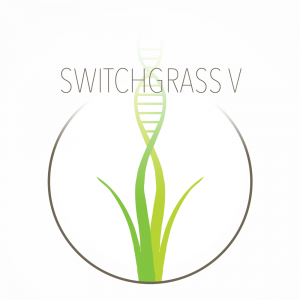 On July 22-25, 2019, the Next-Gen Feedstocks team and PI D.K. Lee hosted the Switchgrass V International Conference, titled “Dedicated Energy Crops and Native Grasses for the Emerging Bioeconomy.”
On July 22-25, 2019, the Next-Gen Feedstocks team and PI D.K. Lee hosted the Switchgrass V International Conference, titled “Dedicated Energy Crops and Native Grasses for the Emerging Bioeconomy.”
Sponsored by the U of I Department of Crop Sciences, iSEE, the Center for Advanced Bioenergy and Bioproducts Innovation (CABBI), Green Lands Blue Waters, Ernst Conservation Seeds, and the Sun Grant Initiative’s North Central Regional Center, the conference at the Holiday Inn was a discussion about switchgrass and other dedicated energy crops grown for forage, conservation, and bioenergy production.
More than 100 scientists attended the conference.
 The Institute for Sustainability, Energy, and Environment (iSEE) was instrumental in helping the team land the $5 million U.S. Department of Energy grant.
The Institute for Sustainability, Energy, and Environment (iSEE) was instrumental in helping the team land the $5 million U.S. Department of Energy grant.
iSEE, which helped put forth the successful proposal, is an administrative partner along with the Carl R. Woese Institute for Genomic Biology (IGB) in the new Center for Advanced Bioenergy and Bioproducts Innovation (CABBI), a DOE Bioenergy Research Center that is studying energy crop trait improvement; automated conversion of biomass into useful, valuable chemicals; and studies on the economic and environmental sustainability of CABBI crops and processes.
“By including CABBI, the national labs, and industry members, along with other partners’ large Midwest energy crop research sites, we can loop our real-world data into today’s bioeconomy industry,” said PI D.K. Lee, a Professor of Crop Sciences. “This will help us find the right varieties of grasses — and speed adoption of practices that increase the growth of this new energy supply while reducing cost.
“I’m grateful to (iSEE and CABBI Director) Evan H. DeLucia and the iSEE team for helping us put together a successful proposal.”
The Team

Principal Investigator D.K. Lee in a switchgrass field with some of his team members from the University of Illinois at Urbana-Champaign. Photo by Jordan Goebig / iSEE
Principal Investigator (PI) and co-PIs
- D.K. Lee (PI), Professor of Crop Sciences, University of Illinois Urbana-Champaign
Departmental page >>>
Lab page >>> - Emily Heaton, Professor of Crop Sciences, University of Illinois Urbana-Champaign
Departmental page >>> - David Archer, Agricultural Economist, U.S. Department of Agriculture (USDA) Agricultural Research Service (ARS) (Northern Great Plains Research Laboratory, Mandan, N.D.)
USDA ARS page >>> - Arvid Boe, Professor of Agronomy, Horticulture, and Plant Science, South Dakota State University
Departmental page >>> - Kevin Comer, Principal and Senior Project Manager, Antares Group Inc.
Company page >>> - Amber Hoover, Research Scientist, Idaho National Laboratory Biofuels and Renewable Energy Technologies Department
INL page >>> - Robert Mitchell, Research Agronomist, USDA ARS (Wheat, Sorghum, and Forage Research, Lincoln, Neb.)
USDA ARS page >>> - Cristina Negri, Director, ANL ESD
ANL page >>>
Operating Team (Postdocs, Technicians, Students)
- Muhammad Umer Arshad, Postdoctoral Researcher, Lee Laboratory
Lab page >>> - Gevan Behnke, Postdoctoral Researcher, Lee Laboratory
Lab page >>> - Daniel Wasonga, Postdoctoral Researcher, Lee Laboratory
Lab page >>> - Jules Cacho, Postdoctoral Appointee, ANL ESD
ANL page >>> - Colleen Zumpf, Postdoctoral Appointee, ANL ESD
ANL page >>> - Danielle Clark, Assistant Scientist, Department of Agronomy, Iowa State University
Departmental page >>> - Virginia Jin, Research Soil Scientist, USDA-ARS
USDA page >>> - Bill Belden, Senior Agricultural Specialist, Antares Group
Antares page >>> - John Quinn, Hydrogeology Specialist, ANL ESD
ANL page >>> - Nictor Namoi, Ph.D. Candidate in Crop Sciences, University of Illinois Urbana-Champaign
Read more about Nictor and his work >>> - Jacob Studt, Research Scientist, Department of Agronomy, Iowa State University
Departmental page >>>
Industry Partners/Collaborators
- Dave Bushong, Senior Vice President of Research, POET-DSM Advanced Biofuels LLC
- Frank Dohleman, External Stakeholder Lead, Science, The Climate Corp.
- Matt Lechtenberg, Water Quality Coordinator, Iowa Department of Agriculture and Land Stewardship
- Kevin Mason, Vice President of Operations, FDC Enterprises
- Lucy Miller, Enginuity Worldwide LLC
Former Team Members
- Serge Edme, Research Geneticist, USDA ARS (Wheat, Sorghum, and Forage Research, Lincoln, Neb.)
USDA ARS page >>> - Kirk LaGory, Department Head, Water and Aquatic Resources, Argonne National Laboratory (ANL) Environmental Science Division (ESD)
ANL page >>> - Umakant Mishra, Geospatial Scientist, ANL ESD
ANL page >>> - Vance Owens, Regional Director, North Central Regional Sun Grant Center, South Dakota State University
Departmental page >>> - Yuki Hamada, Biophysical Remote Sensing Scientist, ANL ESD
ANL page >>> - Cheng-Hsien Lin, Postdoctoral Researcher, University of Illinois Urbana-Champaign
- Nic Boersma, Staff Scientist, Department of Agronomy, Iowa State University
Departmental page >>> - Erik Kinkelaar, Field Technician in Crop Sciences, University of Illinois Urbana-Champaign
- Nora Grasse, Research Aide, ANL ESD
- Alex Steiner, Ph.D. Candidate in Agronomy, Iowa State University
Departmental page >>> - Perla Carmenate, Undergraduate in Agronomy, Iowa State University
- Maddy Connell, Undergraduate in Agronomy, Iowa State University
- Collin DeGraaf, Undergraduate in Agronomy, Iowa State University
- Aaryn Graeves, Undergraduate in Agronomy, Iowa State University
- Anya Knecht, Project Manager, Institute for Sustainability, Energy, and Environment (iSEE)
Publications & Presentations
(Team members and former team members in bold)
- LaGory, K.E., Cacho, J.F., Zumpf, C.R., Lee, D.K., Feinstein, J., Dematties, D., Walston, L.J., Namoi, N., Negri, M.C. (2024). “Bird Species Use of Bioenergy Croplands in Illinois, USA — Can Advanced Switchgrass Cultivars Provide Suitable Habitats for Breeding Grassland Birds?” Sustainability.
- Zumpf, C.R., Cacho, J.F., Grasse, N.F., Walsh, C., Lee, D.J., Lee, D.K., Negri, M.C. (2023). “Evapotranspiration of Advanced Perennial Bioenergy Grasses Produced on Marginal Land in the U.S. Midwest.” Biomass and Bioenergy.
- Cacho, J.F., Feinstein, J., Zumpf, C.R., Hamada, Y., Lee, D.J., Namoi, N.L., Lee, D.K., Boersma, N.N., Heaton, E.A., Quinn, J.J., Negri, C. (2023). “Predicting Biomass Yields of Advanced Switchgrass Cultivars for Bioenergy and Ecosystem Services Using Machine Learning.” Energies, 16(10), 4168.
- Cooney, D.R., Namoi, N., Zumpf, C., Lim, S. H., Villamil, M., Mitchell, R., Lee, D.K. (2022). “Biomass Production and Nutrient Removal by Perennial Energy Grasses Produced on a Wet Marginal Land.” BioEnergy Research, 1-12.
- Lin, C.H., Namoi, N., Hoover, A., Emerson, R., Cortez, M., Wolfrum, E., Payne, C., Egenolf, J., Harmoney, K., Kallenbach, R., Lee, D. K. (2022). “Harvest and Nitrogen Effects on Bioenergy Feedstock Quality of Grass-Legume Mixtures on Conservation Reserve Program Grasslands.” GCB Bioenergy.
- Namoi, N., Archer, D., Rosenstock, T. S., Jang, C., Lin, C.H., Boe, A., Lee, D.K. (2022). “How Profitable is Switchgrass in Illinois, USA? An Economic Definition of Marginal Land. Grassland Research.
- Zumpf, C., Cacho, J., Grasse, N., Quinn, J., Hampton-Marcell, J., Armstrong, A., Campbell, P., Negri, M.C., Lee, D.K. (2021). “Influence of Shrub Willow Buffers Strategically Integrated in an Illinois Corn-Soybean Field on Soil Health and Microbial Community Composition.” Science of the Total Environment, 772, 145674.
- Hamada, Y., Zumpf C.R., Cacho J.F., Lee D.K., Lin C.H., Boe A., Heaton E., Mitchell R., Negri M.C. (2021). “Remote Sensing-Based Estimation of Advanced Perennial Grass Biomass Yields for Bioenergy.” Land, 10(11):1221.
